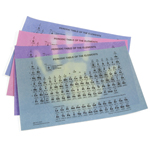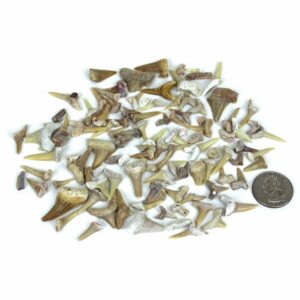A short time ago I received the following inquiry regarding our Heat-Sensitive Paper. One of the joys of being the president of Educational Innovations is having the opportunity to answer questions like this.
Q: What chemical coats your Heat-Sensitive Paper that makes it change color? My chemistry class wants to know the chemistry of what is happening on our heat-sensitive periodic tables. Can you please help us?
help us?
A: Some of the characteristics of our heat-sensitive periodic tables are easy to understand and some more challenging. The inks used provide color at lower temperatures and are colorless at higher temperatures. The change over temperature is called the “critical temperature.” Adding heat to the paper causes the paper to loose its color, an “endothermic” reaction. The reverse, going from colorless to colored, is an “exothermic” reaction and returns the heat.
To manufacture this paper, long rolls of white paper are unwound, coated on one side, dried, cut, and finally stacked into reams. Read the rest of this entry »




 Posted by Tami O'Connor
Posted by Tami O'Connor  by: Tami O’Connor
by: Tami O’Connor by: Ken Byrne
by: Ken Byrne by Laurie Neilsen
by Laurie Neilsen